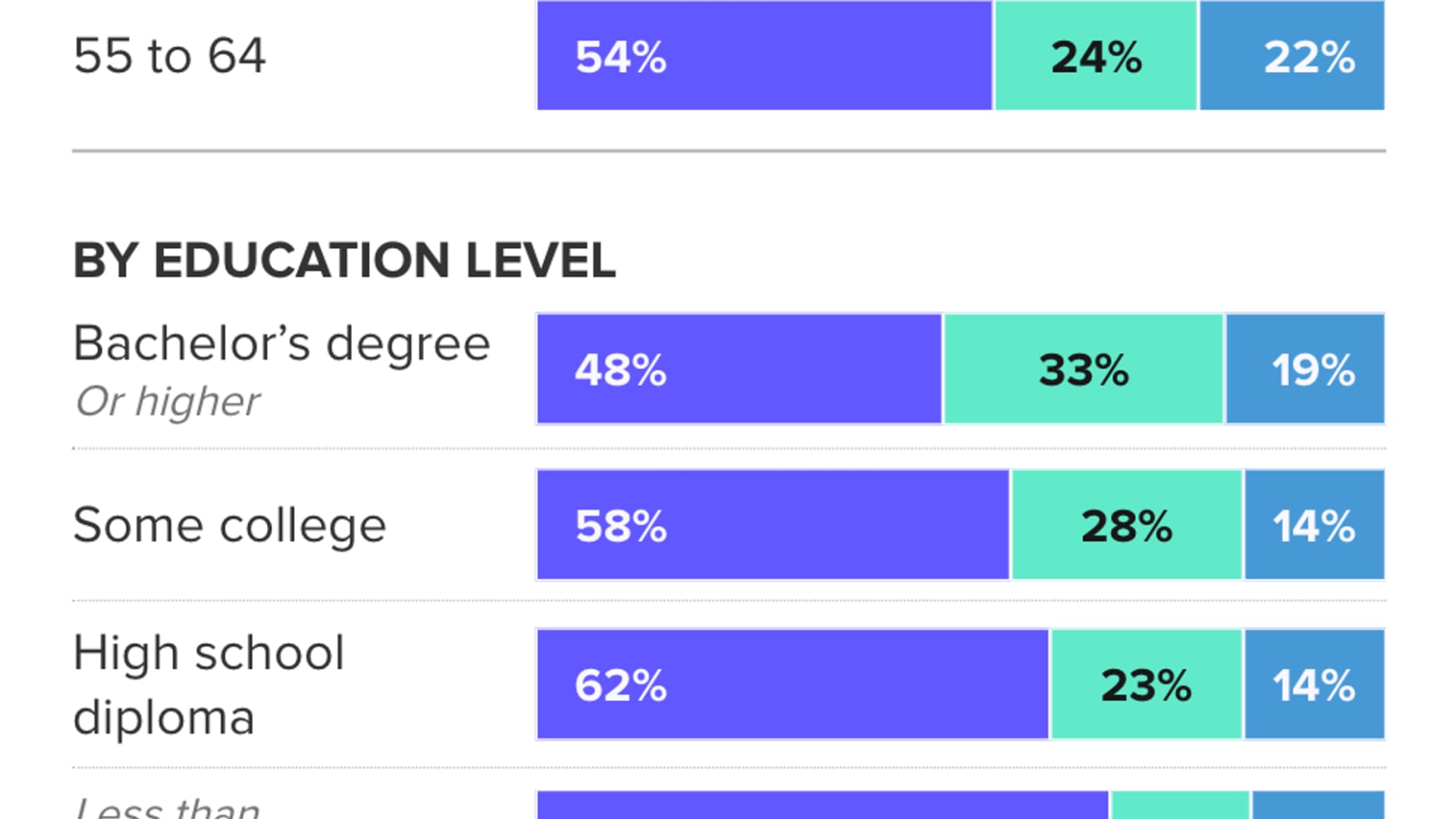
In almost half of opposite-sex marriages in the U.S., women are now earning the same as their husbands — or out-earning them, by an average of $53,000.
Although men are still the breadwinners in most households, the share of women making just as much or more than their husbands has nearly tripled in the last 50 years, a new Pew Research Center survey has found.
Spouses are earning the same income in nearly one-third, or 29%, of opposite-sex marriages, a significant jump from just 11% in 1972. In egalitarian marriages, men and women's earnings are almost identical: In 2022, the median earnings for wives in such marriages was $60,000, while husbands earned $62,000.
About 16% of opposite-sex marriages in the U.S. have a breadwinner wife, up from 5% five decades earlier, Pew reports. When the wife is the breadwinner, however, her median earnings are about $88,000 per year, while her husband's are roughly $35,000, less than 40% of her income.
Get New England news, weather forecasts and entertainment stories to your inbox. Sign up for NECN newsletters.
Comparatively, in marriages where the husband is the primary provider, wives earn a median of $30,000, while husbands earn a median $96,000.

Why more wives are becoming breadwinners
Money Report
Education and motherhood have a strong influence on married women's earnings, according to Richard Fry, a senior researcher at Pew.
Women increasingly outpace men in college enrollment and graduation rates: Among those ages 25 and older, women are more likely than men to have a four-year college degree, Pew found.
"When wives are better educated than their husbands, they're more likely to out-earn them," says Fry.
In addition to achieving higher levels of education, women in the U.S. are having fewer children and having them later in life, another trend that likely helped boost women's earnings, says Ruth Thomas, a pay equity strategist at Payscale.
Past research has shown that the pay gap gets worse around the same time women are more likely to become parents and have young children at home.
If women are choosing to have children later in their careers, when they are earning more, or having fewer children, their earnings are better insulated from the "motherhood penalty."
"There are still people who prescribe to the traditional gender roles that women are more valuable as the primary caregivers and men are more valuable as workers," says Thomas. "Men are hardly penalized for becoming fathers, but women face consequences for making the same choice."
Women continue to bear the brunt of household responsibilities, even as financial contributions have become more equal in opposite-sex marriages. According to the Pew report, "the only marriage type where husbands devote more time to caregiving than their wives is one in which the wife is the sole breadwinner."
Embracing female breadwinners, despite the stigma
Natasha Bowman, 44, became the sole breadwinner for her household 12 years ago when she and her husband, Kent, moved from Arkansas to New York with their two young children.
At the time, her daughter Shannon was 3 and her son Campbell was 11. Bowman, a lawyer, earned significantly more than her husband, who was a high school history teacher.
Her six-figure salary alone was enough to support the family of four, so she and Kent decided it would be more cost-effective for him to stay at home with Shannon instead of paying for day care.

She's still the sole breadwinner in her household, an arrangement Bowman says has worked "incredibly well" for her marriage despite the backlash she and Kent have received from relatives and friends over the years.
It's helped Bowman propel her career "much faster" than if she had more on her plate, she adds. In 2016, she launched her own workplace consulting firm, Performance ReNEW, which became her full-time job in 2020.
"We've been on the receiving end of comments like, 'I don't believe a man should be at home, he should be at work,' but we tune it out, because for us, the benefits have far outweighed any negativity," says Bowman. "We've both found purpose and fulfillment focusing on the things we're good at, whether it's our jobs or caring for our family …. It's just cut out a lot of the stress that comes with trying to juggle it all."
Correction: The "Breadwinners" chart has been updated to accurately reflect the age data provided by Pew Research.
DON'T MISS: Want to be smarter and more successful with your money, work & life? Sign up for our new newsletter!
Check out:
The wage gap gets worse for women in their 30s and 40s—and it's not just the 'motherhood penalty'
How this 33-year-old brought in $2 million making PowerPoints






